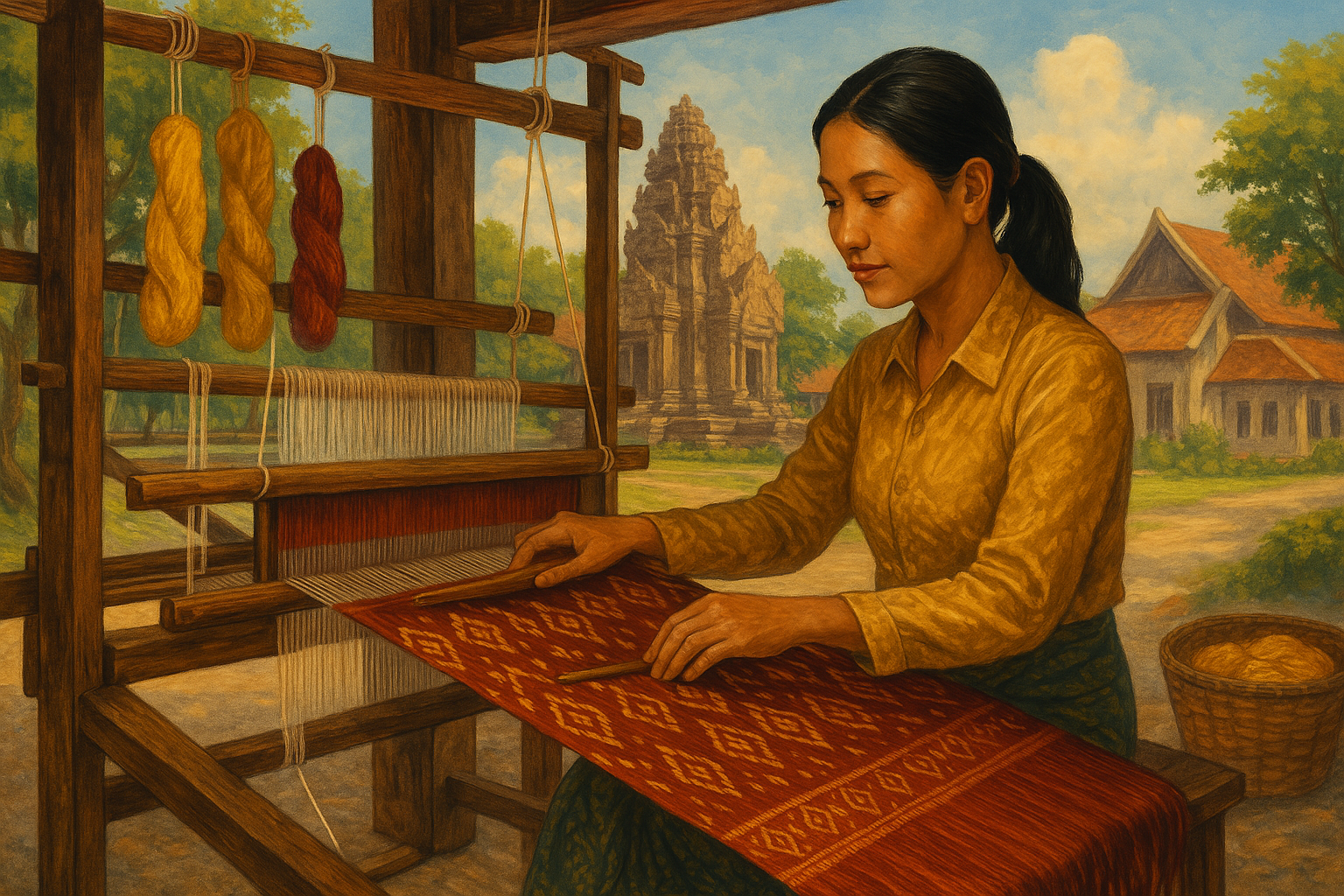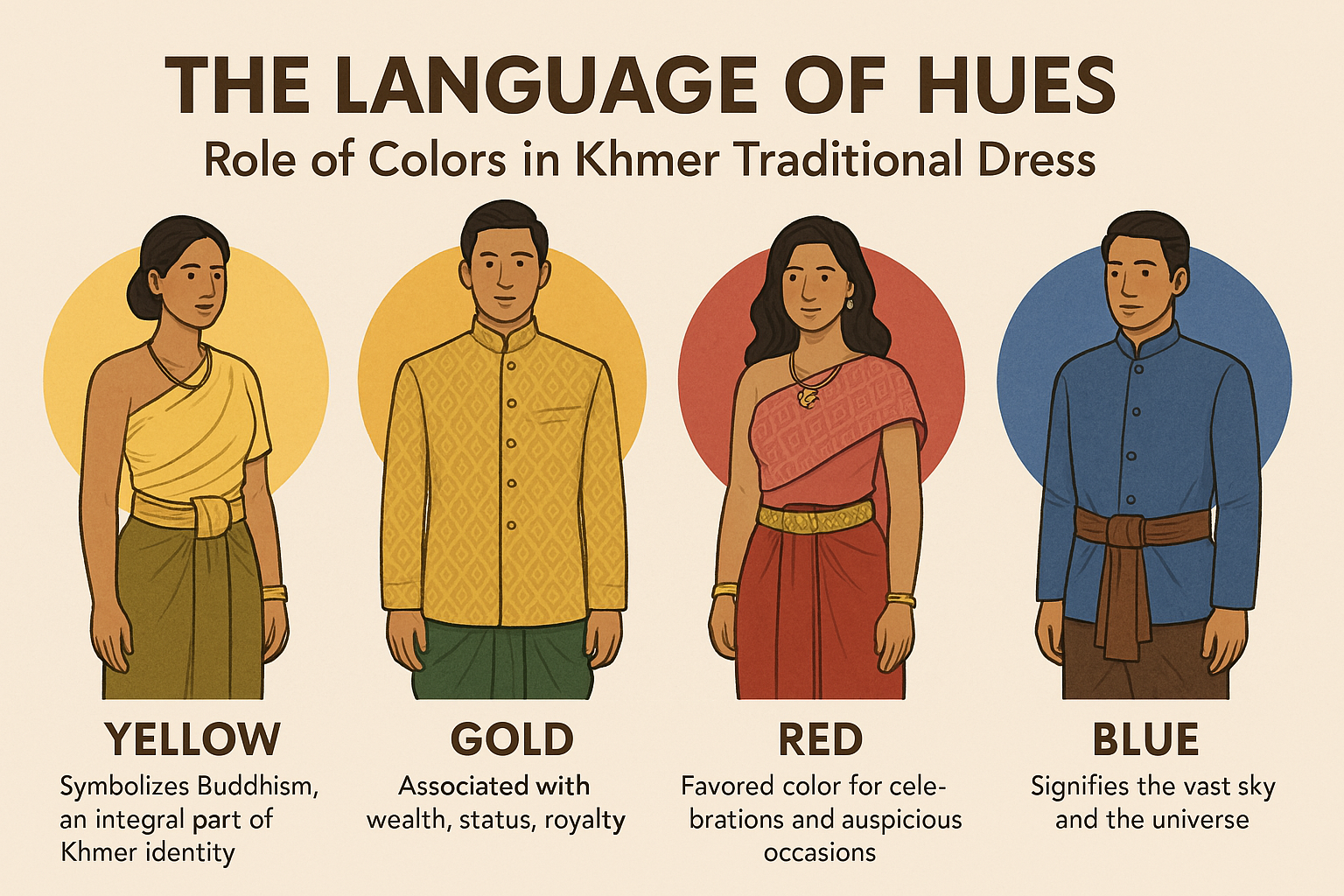The story of traditional Khmer textiles in the 21st century is one of remarkable resilience, revival, and adaptation. After facing devastation during the Khmer Rouge era, Cambodia’s ancient weaving traditions, particularly silk production and the intricate art of Ikat (Chong Kiet), are navigating a future shaped by dedicated preservation efforts, contemporary creative energy, global market forces, and the pervasive influence of tourism. The path forward involves a delicate balance: honoring centuries-old heritage while ensuring its relevance and viability in a rapidly modernizing world – a dynamic visible across the country, including in culturally significant centers like Battambang.
Nurturing the Roots: Ongoing Revival Efforts
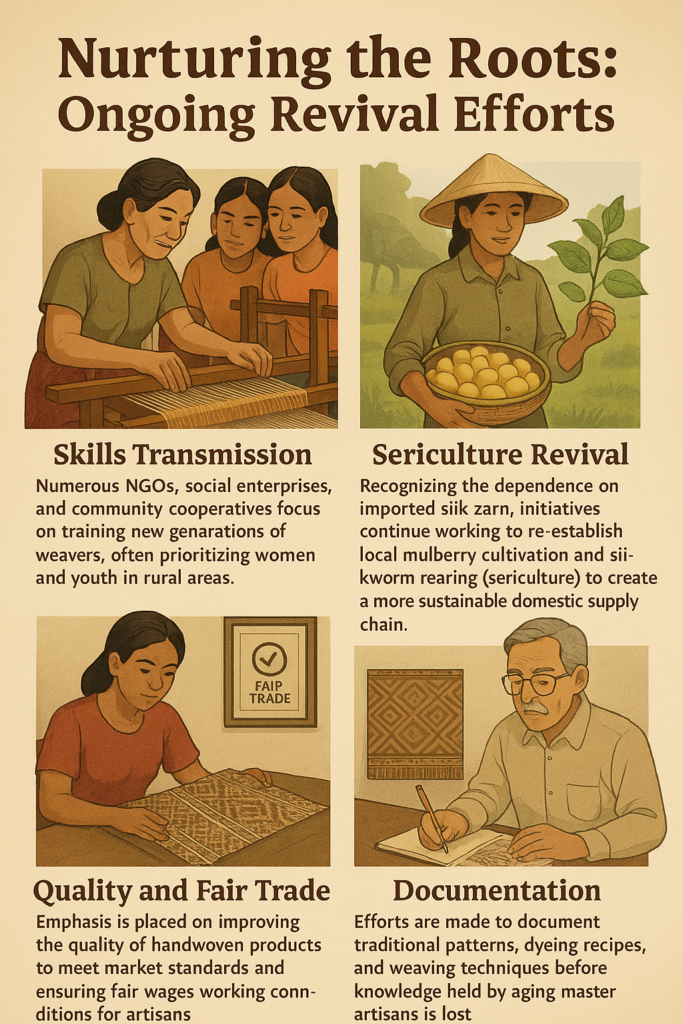
As of 2025, significant efforts continue to be invested in reviving and sustaining Cambodia’s textile heritage:
- Skills Transmission: Numerous NGOs, social enterprises, and community cooperatives focus on training new generations of weavers, often prioritizing women and youth in rural areas. Training emphasizes not only basic weaving but also complex techniques like Ikat and the use of natural dyes, which were severely endangered.
- Sericulture Revival: Recognizing the dependence on imported silk yarn, initiatives continue working to re-establish local mulberry cultivation and silkworm rearing (sericulture) to create a more sustainable domestic supply chain.
- Quality and Fair Trade: Emphasis is placed on improving the quality of handwoven products to meet market standards and ensuring fair wages and working conditions for artisans, often through fair trade certification or social enterprise models.
- Documentation: Efforts are made to document traditional patterns, dyeing recipes, and weaving techniques before knowledge held by aging master artisans is lost.
New Threads: Young Designers and Modern Interpretation
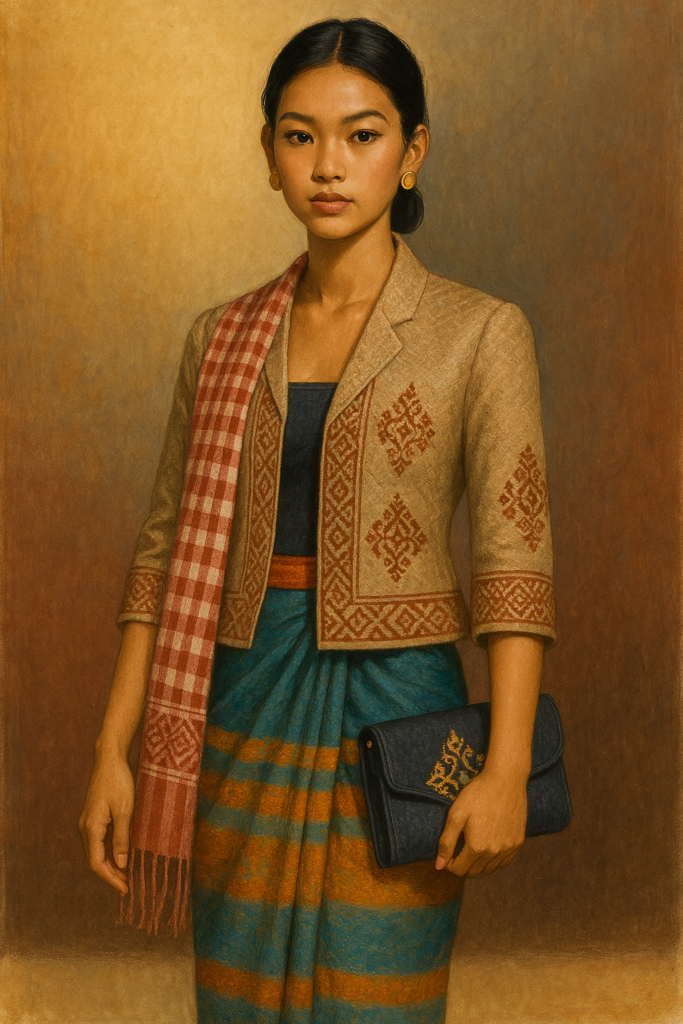
A vibrant contemporary fashion scene is emerging in Cambodia, with many young designers drawing inspiration from their cultural heritage:
- Blending Styles: Designers skillfully incorporate traditional elements into modern fashion. This includes using handwoven Khmer silk, featuring iconic Krama patterns, adapting the silhouettes of the Sampot or traditional jackets (Av), and employing traditional embroidery motifs (kbach) on contemporary garments and accessories.
- Cultural Pride: This fusion creates unique aesthetics that celebrate Khmer identity and distinguish Cambodian fashion globally. It also helps make traditional textiles appealing and relevant to younger Cambodians who might otherwise favor purely global trends.
- Innovation: These designers often experiment with new color palettes, lighter fabrics, and innovative applications of traditional techniques, pushing the boundaries while respecting the source.
Weaving for the World: The Global Market
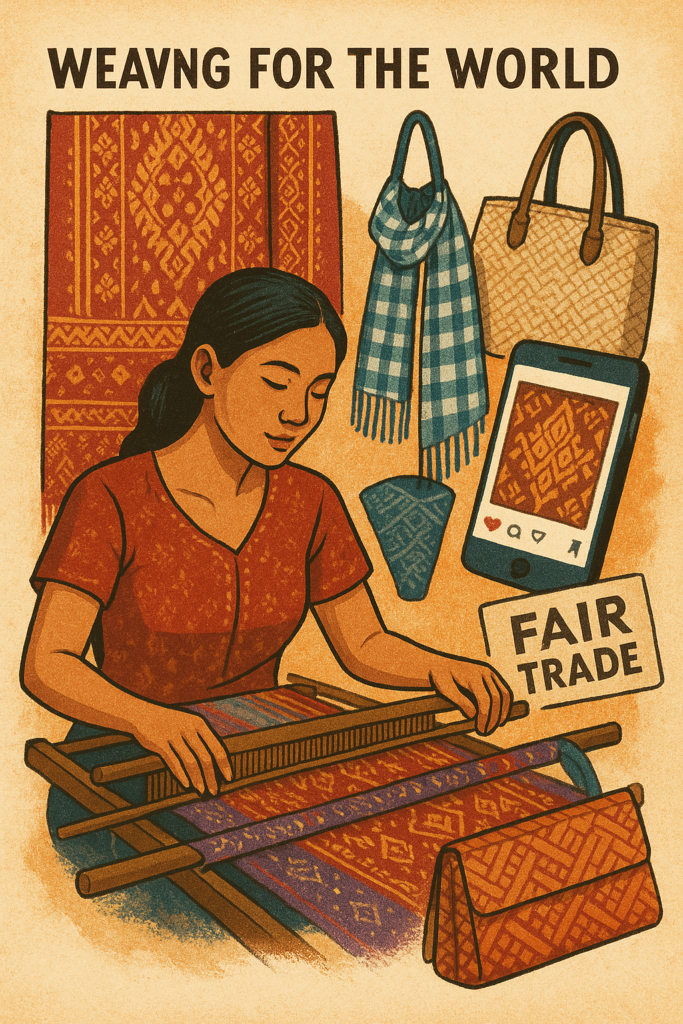
There is growing international interest in authentic, handmade, ethically produced crafts, presenting opportunities for Cambodian textiles:
- Niche Markets: High-quality Cambodian silk products, especially intricate Sampot Hol, appeal to niche markets focused on luxury handicrafts, sustainable fashion, and unique artisanal goods. Handmade accessories like woven bags and Krama products also find international buyers.
- Challenges: Cambodian artisans face significant challenges in accessing and competing in the global market. These include scaling production while maintaining handmade quality, ensuring consistency, meeting international standards, effective marketing and branding, and competing with lower-priced, mass-produced goods from elsewhere.
- Platforms: Online platforms (like Etsy, Instagram, specialized e-commerce sites) and fair-trade organizations play an increasingly important role in connecting Cambodian artisans with international consumers.
Tourism’s Tapestry: Preservation and Pressure
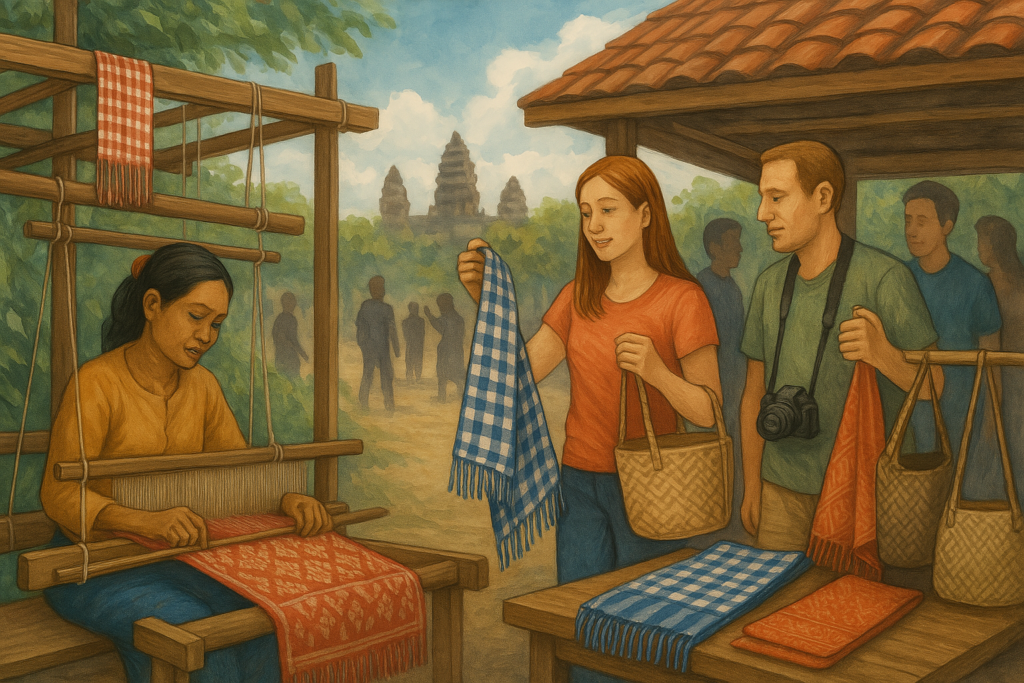
Tourism has a complex, dual impact on traditional textiles:
- Positive Impacts: Tourism provides a crucial market, particularly for accessible items like Krama scarves, cotton Sampots, and woven bags, generating vital income for artisans. Cultural tourism initiatives that include visits to weaving villages or workshops can raise awareness and encourage the preservation of skills as attractions.
- Negative Impacts: The demand for cheap souvenirs can lead to the mass production of low-quality textiles, potentially devaluing authentic craftsmanship. There’s a risk that artisans may feel pressured to simplify complex techniques or alter traditional designs solely to cater to tourist tastes, leading to a gradual erosion of authenticity. Promoting responsible tourism that emphasizes quality, fair prices, and genuine cultural exchange is crucial.
The Balancing Act: Tradition and Modernization in Fashion

Cambodia’s approach to its textile future involves navigating a careful balance:
- Preserving the Core: Ensuring that traditional garments like the Sampot continue to be worn correctly and respectfully during important ceremonies (weddings, religious festivals) and that core techniques, especially complex ones like Ikat, are preserved through dedicated training and documentation.
- Encouraging Innovation: Supporting artisans and designers who adapt traditional skills and aesthetics for contemporary markets – creating fashion, accessories, and home decor that are both culturally rooted and commercially viable.
- Fostering Appreciation: Educating younger generations about the value and beauty of their textile heritage through school programs, museum exhibits, and cultural events.
- Maintaining Identity: Integrating traditional elements into modern life in ways that reinforce a distinct Khmer cultural identity amidst global influences. This delicate balance is essential for ensuring traditions remain alive and meaningful, not just preserved artifacts.
Conclusion
The future of traditional Khmer textiles, viewed from Battambang in early 2025, is being actively woven by the hands of skilled artisans, envisioned by creative designers, and supported by dedicated organizations. While the path forward involves navigating economic challenges, market demands, and the powerful forces of modernization, there is undeniable momentum behind preserving this precious heritage while allowing it to evolve. From the timeless elegance of a silk Sampot Hol gracing a wedding ceremony to a modern jacket subtly incorporating kbach embroidery, Cambodian textiles continue to tell a powerful story of cultural resilience, artistic ingenuity, and enduring national identity. The ongoing commitment to balancing preservation with innovation offers strong hope for the vibrant future of these ancient threads.

